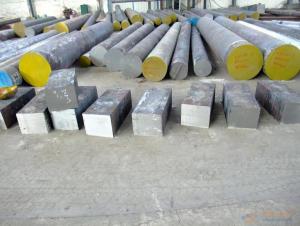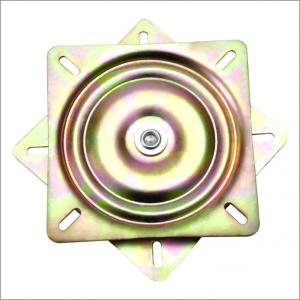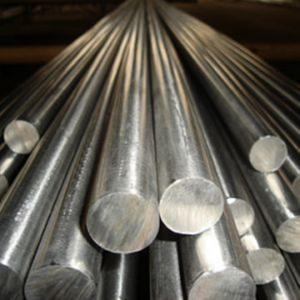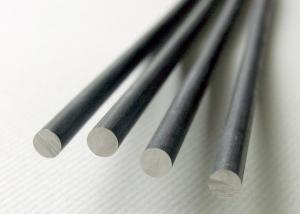Hot Dip Galvanized Steel Sheet/Z140 Galvanized Steel Coil
- Loading Port:
- Tianjin
- Payment Terms:
- TT OR LC
- Min Order Qty:
- 5 m.t.
- Supply Capability:
- 10000 m.t./month
OKorder Service Pledge
OKorder Financial Service
You Might Also Like
Item specifice
Hot Dip Galvanized Steel Sheet/Z140 Galvanized Steel Coil
Details of Hot Dip Galvanized Steel Sheet/Z140 Galvanized Steel Coil
| Grade | Q195 SGCC SGCH CGCC CGCH |
| Standard | JIS GB ASTM DIN |
| Base plate | Cold rolled steel coil ,hot dipped steel coil |
| Zinc coating | Hot dipped galvanized (GI) |
| Zinc thickness | 60-275G/m2 |
| Thickness | 0.15-1.5 mm |
| Width | 914mm, 1000mm,1100mm,1219mm, 1250mm etc |
| Wave depth | 18(+/-2mm) |
| Product feature | water resistance, light weight, easy installation, aesthetic, high tensile |
| Packing | standard export seaworthy packing |
| Delivery time | in 30 days |
| Application | exterior and interior wall, roofs, and soffits |
| Qualification | TUV, ISO9001:2008,ISO14001:2004 |
Specification of Hot Dip Galvanized Steel Sheet/Z140 Galvanized Steel Coil
| NAME | PPGI | GALVANIZED | GALVALUME/ZINCALUME |
| CERTIFICATE | ISO9001:2008 | ||
| STANDARD | EN10142 JIS G3302 GB/T-12754-2006 | ASTM A653M JIS G3302 GB/T2518 EN 10142 | ASTM A792M JIS G3321 JIS G3317 EN 10215 |
| GRADE | CGCC CGCH CGCD1-CGCD3 CGC340-CGC570 | DX51D+Z/DX52D+Z/S250GD+Z S300GD+Z/S350GD+Z/S550GD+Z SGCC/SGCH/SGCD1-SGCD3/SGC340-SGC570 G2+Z/G3+Z/G250+Z/G300+Z G350+Z/G550+Z | DX51D+AZ/DX52D+AZ/S250GD+AZ S300GD+AZ/S350GD+AZ/S550GD+AZ SGLCC/SGLCD/SGLC300-SGLC570 G2+AZ/G3+AZ/G250+AZ/G300+AZ G350+AZ/G550+AZ |
| COATING | RAL COLOURS | Z60g/m2 to Z275g/m2 | AZ30g/m2 to AZ150g/m2 |
| SIZE | (0.13mm-1.5mm)X1000mm OR as requirements | (0.13mm-4.0mm)X1500mm OR as requirements | (0.12mm-4.0mm)X1500mm OR as requirements |
| TYPE | Steel coil Steel sheets/plates Corrugated steel sheets/plates | Steel coil Steel sheets/plates Corrugated steel sheets/plates | Steel coil Steel sheets/plates Corrugated steel sheets/plates |
| TECHNIQUE | Hot rolled-cold rolled -galvalume /galvanized -PPGI/PPGL | Hot rolled-cold rolled -galvanized | Hot rolled-cold rolled -galvalume /Aluzinc |
| SURFACE TREATMENT | Mini/regular/big/zero spangle,Chromate treatment /chromate-free treatment /untreated unoile/oiled, TENSION LEVELLER SKIN PASS anti-fingerprint/un-anti-fingerprint, Coating,color | Mini/regular/big/zero spangle,Chromate treatment /chromate-free treatment /untreated unoile/oiled,TENSION LEVELLERT SKIN PASS anti-fingerprint/un-anti-fingerprint,Coating | |
| APPLICATION | Structural use ,roofing, commercial use, household appliance, industry, family Roofs and outside walls of civilian and industrial buildings, garage doors, fencings and window blinds; Outer clad sheets for washing machine, refrigerator, televi-sion, air conditioner and ventilation system, explosion-proof strip, solar water heater and appliance parts; Muffler, heat shields of exhaust pipe and catalytic converter, auto parts & accessories under the frame, signboard in high -way; Electric control cabinet, industrial refrigeration equipment, automatic vending machine; Wear resistant steel, high- strength - steel plate | ||
Supplier of the Hot Dip Galvanized Steel Sheet/Z140 Galvanized Steel Coil
CNBM International Corporation is the most import and export platform of CNBM group(China National Building Material Group Corporation) ,which is a state-owned enterprise, ranked in 270th of Fortune Global 500 in 2015.
With its advantages, CNBM International are mainly concentrate on Cement, Glass, Iron and Steel, Ceramics industries and devotes herself for supplying high quality series of refractories as well as technical consultancies and logistics solution.
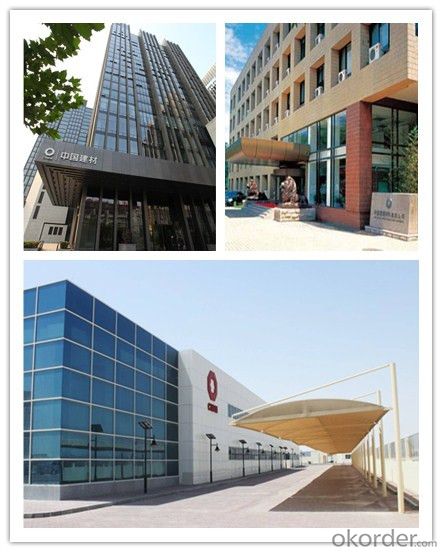
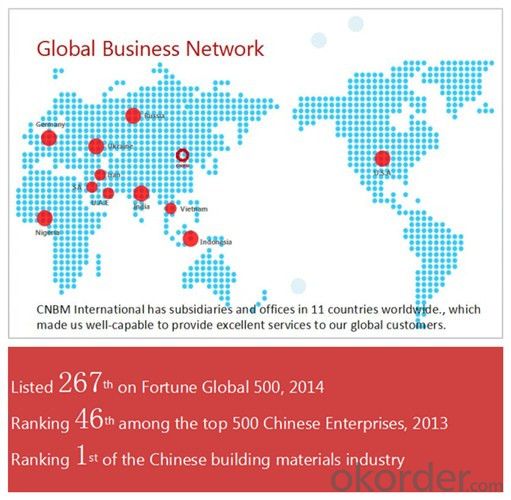
Products Show
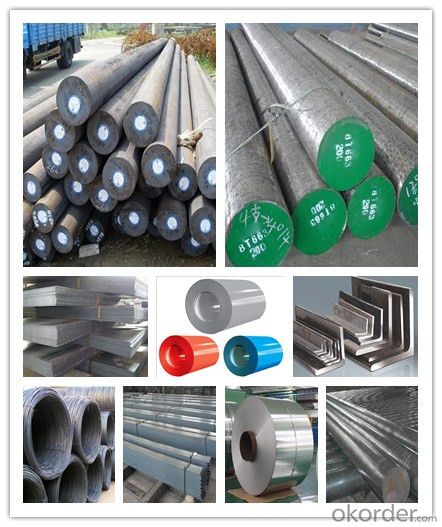
FAQ:
Are you a trading company or manufacturer? | Manufacturer |
What’s the MOQ? | 3 metric ton |
What’s your delivery time? | 15-35 days after downpayment received |
Do you Accept OEM service? | Yes |
what’s your delivery terms? | FOB/CFR/CIF |
What's the Payment Terms? | 30% as deposit,70% before shipment by T/T |
Western Union acceptable for small amount. | |
L/C acceptable for large amount. | |
Scrow ,Paybal,Alipay are also ok | |
Why choose us? | Chose happens because of quality, then price, We can give you both. Additionally, we can also offer professional products inquiry, products knowledge train (for agents), smooth goods delivery, excellent customer solution proposals. |
What's your available port of Shipment? | Main Port, China |
What’s your featured services? | Our service formula: good quality+ good price+ good service=customer's trust
|
Where are your Market? | Covering more than 160 countries in the world |
- Q:How is special steel tested for quality?
- Special steel is tested for quality through various processes such as chemical analysis, mechanical testing, and non-destructive testing. Chemical analysis involves checking the composition and purity of the steel to ensure it meets the required specifications. Mechanical testing includes assessing the strength, hardness, and toughness of the steel through methods like tensile testing, impact testing, and hardness testing. Non-destructive testing techniques like ultrasonic testing, magnetic particle inspection, and radiographic testing are employed to detect any defects or irregularities within the steel without causing any damage. These comprehensive tests ensure that special steel meets the necessary quality standards before it is used in various industries.
- Q:How does special steel contribute to the hardness of products?
- Special steel contributes to the hardness of products through its unique composition and manufacturing processes. Unlike regular steel, special steel is alloyed with additional elements such as chromium, nickel, and manganese, which enhance its strength and durability. These alloying elements form solid solutions within the steel matrix, creating a more rigid and dense structure. The presence of these alloying elements in special steel allows for the formation of various microstructures, such as fine-grained structures or martensitic structures, which significantly increase the hardness of the steel. Moreover, special steel often undergoes heat treatment processes like quenching and tempering, which further refine its microstructure and improve its hardness. Additionally, the manufacturing processes used for special steel, such as hot rolling or cold working, can also contribute to its hardness. These processes deform the steel, aligning its grain structure and reducing any defects or impurities present, leading to a more uniform and harder material. The hardness of special steel is crucial in various industries where strength and resistance to wear and deformation are essential. For example, in the automotive industry, special steel is used to manufacture components like engine parts, gears, and axles, which require high hardness to withstand the demanding conditions and loads they experience. Similarly, in the construction industry, special steel is used for producing tools, cutting blades, and reinforcement bars, where hardness is crucial for longevity and performance. In summary, special steel contributes to the hardness of products through its unique alloying elements, manufacturing processes, and heat treatments. Its ability to form microstructures and its resistance to deformation make it an ideal material for applications where hardness is essential for performance and durability.
- Q:What are the different surface treatments used for special steel?
- There are several different surface treatments that can be used for special steel, depending on the specific requirements and desired properties. Some of the commonly used surface treatments for special steel include: 1. Nitriding: This process involves diffusing nitrogen into the surface of the steel, resulting in a hardened layer. Nitriding improves the surface hardness, wear resistance, and fatigue strength of the steel. 2. Carburizing: Carburizing involves introducing carbon into the surface of the steel, forming a hard and wear-resistant layer. This process enhances the surface hardness and improves the steel's resistance to wear and fatigue. 3. Coating: Coating is a popular surface treatment technique where a thin layer of protective material is applied to the steel surface. Coatings can include various materials like zinc, chrome, or ceramic, which provide corrosion resistance, improved aesthetics, and enhanced durability. 4. Shot peening: Shot peening is a mechanical surface treatment technique that involves bombarding the steel surface with small metallic or ceramic particles. This process induces compressive stresses in the material, enhancing its fatigue strength and resistance to cracking. 5. Electroplating: Electroplating is a process where a thin layer of metal is deposited onto the steel surface using an electrical current. This treatment provides improved corrosion resistance and can also enhance the appearance of the steel. 6. Passivation: Passivation involves treating the steel surface with a chemical solution to remove impurities and create a protective oxide layer. This process improves the corrosion resistance and enhances the surface finish of the steel. 7. Anodizing: Anodizing is a surface treatment commonly used for aluminum but can also be applied to special steel. It involves creating an oxide layer on the steel surface through an electrolytic process. Anodizing improves corrosion resistance, provides an aesthetic finish, and can also be used for coloring the steel. These different surface treatments offer various benefits and are chosen based on the specific application requirements, such as corrosion resistance, wear resistance, hardness, aesthetics, or improved mechanical properties.
- Q:What are the different mechanical defects in special steel?
- There are several mechanical defects that can occur in special steel, which can compromise its overall strength and performance. Some of the most common defects include: 1. Inclusions: Inclusions are foreign particles or impurities that are present in the steel. These can include oxides, sulfides, or other non-metallic materials. Inclusions can weaken the steel and reduce its ductility, making it more prone to cracking or failure. 2. Segregation: Segregation refers to the uneven distribution of alloying elements within the steel. This can lead to variations in hardness, strength, and other mechanical properties across the material. Segregation can create localized areas of weakness, increasing the likelihood of failure under stress. 3. Cracks: Cracks can occur in special steel due to a variety of factors, such as improper cooling, excessive heat, or high levels of stress. Cracks can significantly reduce the structural integrity of the steel and may propagate over time, leading to catastrophic failure. 4. Laminations: Laminations are thin layers or sheets of material that are formed during the manufacturing process. They can occur due to improper rolling or forging, or the presence of inclusions. Laminations can weaken the steel and lead to premature failure under load. 5. Decarburization: Decarburization is the loss of carbon from the surface of the steel, typically due to exposure to high temperatures or oxidation. This can result in a layer of softer, lower carbon steel on the surface, reducing the overall hardness and strength of the material. 6. Grain growth: Grain growth occurs when the individual crystals within the steel (grains) grow larger over time. This can happen due to high temperatures, prolonged exposure to stress, or improper heat treatment. Grain growth can reduce the strength and toughness of the steel, making it more prone to deformation or fracture. It is important to note that these mechanical defects can vary in severity and are often influenced by factors such as the manufacturing process, quality control measures, and the specific composition of the special steel. Regular inspection, testing, and adherence to proper handling and processing techniques are essential to minimize these defects and ensure the desired mechanical properties in special steel.
- Q:What are the main characteristics of high-speed steel?
- High-speed steel (HSS) is a type of tool steel that is widely used in machining applications due to its exceptional properties. The main characteristics of high-speed steel include: 1. Superior Hardness: HSS is known for its remarkable hardness, which allows it to withstand high temperatures and resist wear. This hardness is achieved through the addition of various alloying elements like tungsten, molybdenum, cobalt, vanadium, and chromium. 2. Excellent Heat Resistance: High-speed steel has exceptional heat resistance, enabling it to maintain its hardness and strength even at elevated temperatures. This property is crucial in applications where the tool needs to withstand high cutting speeds and generate significant amounts of heat. 3. Good Toughness: HSS possesses good toughness, which means it can resist cracking and chipping under heavy loads or impact. This characteristic ensures that the tool can endure demanding cutting conditions without premature failure. 4. High Wear Resistance: HSS exhibits high wear resistance, making it suitable for cutting, drilling, and milling operations. It can withstand prolonged usage without losing its sharpness or performance, resulting in extended tool life. 5. Versatility: High-speed steel is highly versatile and can be used for a wide range of applications, including cutting, shaping, and forming various materials such as metals, plastics, and wood. Its versatility makes it a popular choice in industries like manufacturing, automotive, aerospace, and construction. 6. Ease of Machining: HSS can be easily machined and shaped into different tool designs, which allows for customization and optimization based on specific applications. This characteristic makes it a preferred material for manufacturing cutting tools like drills, end mills, taps, and saw blades. 7. Cost-Effective: Compared to other high-performance tool materials like carbide, high-speed steel is relatively more cost-effective. It provides a balance between performance and affordability, making it a cost-efficient choice for many machining applications. In conclusion, high-speed steel is valued for its exceptional hardness, heat resistance, toughness, wear resistance, versatility, ease of machining, and cost-effectiveness. These characteristics make it a preferred material for a wide range of cutting tools, ensuring efficient and reliable machining operations.
- Q:How does special steel contribute to the overall economy?
- Special steel contributes to the overall economy in various ways. Firstly, special steel is widely used in industries such as automotive, construction, energy, and machinery, among others. Its unique properties and characteristics make it a preferred material for manufacturing high-performance and durable products. This demand for special steel drives economic growth by creating jobs in the steel industry and related sectors. Additionally, the production and export of special steel contribute to a country's export earnings, thus boosting its trade balance and overall economic performance. Many countries with thriving steel industries, such as China, Japan, and Germany, have significantly benefited from the export of special steel products. Moreover, the development and advancement of special steel technologies have a positive impact on innovation and research and development (R&D). Companies in the steel industry invest in R&D to improve the properties and performance of special steel. This not only leads to the creation of new and better steel alloys but also drives innovation in other industries that rely on special steel products. Furthermore, special steel plays a crucial role in infrastructure development. It is used in the construction of bridges, buildings, pipelines, and other critical infrastructure projects. The use of special steel in these projects enhances their durability, safety, and longevity, resulting in cost savings over the long term. This, in turn, contributes to economic development by promoting sustainable and efficient infrastructure. Lastly, special steel also contributes to the overall economy by fostering a competitive manufacturing sector. Countries with a strong special steel industry have a competitive advantage in various industries, as they can produce high-quality products more efficiently. This attracts investment, encourages industrial growth, and boosts overall productivity, leading to economic prosperity on a national scale. In conclusion, special steel contributes to the overall economy through its widespread use in various industries, its role in driving export earnings, its impact on innovation and R&D, its contribution to infrastructure development, and its ability to foster a competitive manufacturing sector.
- Q:How does special steel contribute to the oil and gas equipment industry?
- Special steel plays a crucial role in the oil and gas equipment industry as it offers exceptional strength, corrosion resistance, and durability. It is used in the manufacturing of various critical components such as pipes, valves, fittings, and offshore platforms. Special steel's high heat resistance and ability to withstand extreme pressure and harsh environments make it an ideal choice for oil and gas equipment, ensuring reliability and safety in operations.
- Q:Can special steel be used in the production of springs for automotive suspension?
- Yes, special steel can be used in the production of springs for automotive suspension. Special steel, such as high-strength or alloy steel, is often preferred for its improved durability, strength, and resistance to fatigue. These properties are critical for springs in automotive suspension systems, as they need to withstand the constant stress and load of the vehicle's weight and provide a smooth ride.
- Q:How does special steel contribute to the manufacturing of cutting blades?
- The manufacturing of cutting blades heavily relies on the use of special steel, which plays a vital role in this process. Cutting blades must possess exceptional strength, durability, and sharpness in order to effectively carry out their intended function. Special steel, also referred to as tool steel, possesses distinctive properties that make it the ideal material for the production of cutting blades. To begin with, special steel boasts remarkable hardness, allowing cutting blades to maintain their sharpness over an extended period of time. Blades made from special steel can endure the wear and tear that occurs during cutting operations. This hardness enables the blades to retain their cutting edge, resulting in a longer lifespan and enhanced cutting performance. Furthermore, special steel provides exceptional toughness, which is crucial for cutting blades. During cutting operations, blades are subjected to high impact and stress. The toughness of special steel helps to absorb these forces and prevents the blades from breaking or chipping. This ensures that the cutting blades can withstand demanding cutting tasks without compromising their performance. Additionally, special steel offers excellent corrosion resistance. Cutting blades frequently come into contact with various materials, including moisture and chemicals. The corrosion resistance of special steel prevents the blades from rusting or corroding, ensuring their longevity and reducing the need for frequent replacements. Moreover, special steel possesses good machinability, making it easier to shape and form into the desired blade design. This enhances the manufacturing process by allowing the production of cutting blades with intricate features and complex shapes. The machinability of special steel enables manufacturers to create blades with precise cutting edges and optimal geometries, resulting in superior cutting performance. In conclusion, special steel significantly contributes to the manufacturing of cutting blades by providing hardness, toughness, corrosion resistance, and good machinability. These properties ensure that cutting blades made from special steel are long-lasting, durable, and capable of delivering exceptional cutting performance in various applications.
- Q:How does special steel contribute to the energy equipment industry?
- Special steel plays a crucial role in the energy equipment industry by providing the necessary strength, durability, and resistance to extreme conditions. The energy equipment industry encompasses various sectors such as oil and gas, renewable energy, power generation, and transmission, all of which rely heavily on special steel for their infrastructure and machinery. In the oil and gas sector, special steel is used in the construction of pipelines, drilling equipment, and storage tanks. The unique properties of special steel, such as high tensile strength, corrosion resistance, and the ability to withstand high pressure and temperature, make it an ideal material for these applications. Special steel also ensures the safety and reliability of oil and gas operations, as it can withstand harsh environments, including corrosive substances and extreme weather conditions. In the renewable energy sector, special steel is used in the manufacturing of wind turbines, solar panels, and hydroelectric power systems. These energy sources require strong and lightweight materials that can withstand constant exposure to nature's elements. Special steel alloys, such as high-strength low-alloy (HSLA) steel and stainless steel, are commonly used to construct the infrastructure of renewable energy systems, ensuring their longevity and efficiency. Furthermore, special steel is essential in power generation and transmission equipment. It is utilized in the manufacturing of gas turbines, steam turbines, and generators. Special steel alloys can endure the high temperatures and pressures generated during power generation processes, ensuring the efficiency and reliability of energy production. Additionally, special steel is used in the transmission infrastructure, including transmission towers and power cables, to support the efficient and safe transfer of electricity over long distances. Overall, special steel contributes significantly to the energy equipment industry by providing the necessary strength, durability, and resistance to extreme conditions. It enables the construction of reliable and efficient infrastructure, ensuring the smooth operation of energy systems, whether in oil and gas, renewable energy, or power generation and transmission.
1. Manufacturer Overview |
|
|---|---|
| Location | |
| Year Established | |
| Annual Output Value | |
| Main Markets | |
| Company Certifications | |
2. Manufacturer Certificates |
|
|---|---|
| a) Certification Name | |
| Range | |
| Reference | |
| Validity Period | |
3. Manufacturer Capability |
|
|---|---|
| a)Trade Capacity | |
| Nearest Port | |
| Export Percentage | |
| No.of Employees in Trade Department | |
| Language Spoken: | |
| b)Factory Information | |
| Factory Size: | |
| No. of Production Lines | |
| Contract Manufacturing | |
| Product Price Range | |
Send your message to us
Hot Dip Galvanized Steel Sheet/Z140 Galvanized Steel Coil
- Loading Port:
- Tianjin
- Payment Terms:
- TT OR LC
- Min Order Qty:
- 5 m.t.
- Supply Capability:
- 10000 m.t./month
OKorder Service Pledge
OKorder Financial Service
Similar products
New products
Hot products
Related keywords


























